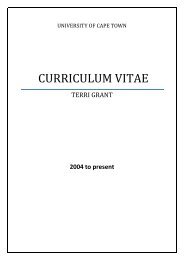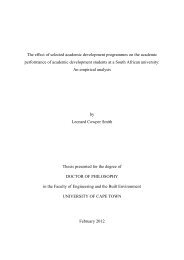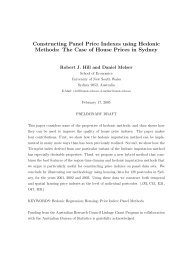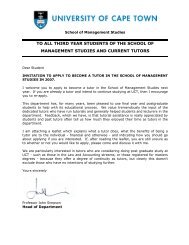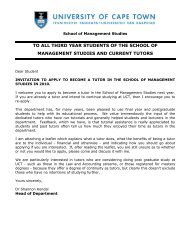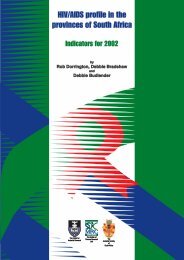Financial Management Honours
Financial Management Honours
Financial Management Honours
You also want an ePaper? Increase the reach of your titles
YUMPU automatically turns print PDFs into web optimized ePapers that Google loves.
3.3 Time Value of Money, Risk and Return, the Cost of Capital and EVA<br />
These are key underlying concepts in the creation of value. It is not enough for firms to earn a<br />
profit, in order to add value the profit must exceed the firm’s cost of capital. The use of<br />
Economic Value Added as a measure of performance is evaluated.<br />
3.4 Capital Budgeting<br />
The analysis of long-term investments is crucial in maximising value, especially in situations<br />
of capital rationing and inflation. The evaluation of capital projects emphasises the tax<br />
implications, real options and the estimation of project cash flows.<br />
3.5 Working Capital <strong>Management</strong><br />
Firms invest substantial funds in working capital. Optimal working capital policies and<br />
current asset management can have a dramatic impact on the value of the firm.<br />
3.6 Source of Finance and Capital Structure<br />
Excessive use of debt can expose a firm to unacceptable levels of risk. Conversely,<br />
conservative debt policies may limit the opportunity for the leverage effect to increase wealth.<br />
How do firms select their debt/equity ratios Which sources of finance should firms use<br />
3.7 Valuation of Companies and Fixed Income securities<br />
The valuation techniques required to value equity and fixed income securities are<br />
fundamental to decision making in corporate finance and portfolio management. Topics<br />
include Yield to Maturity, Free Cash Flow, EVA, Growth models, net asset values and price<br />
earnings multipliers. The global environment, industry factors, macro-economic variables<br />
such as interest rates, as well as firm specific factors impact on the value of securities.<br />
3.8 Theory and Asset Pricing Models<br />
The efficiency (or lack thereof) of capital markets and the Modern Portfolio Theory has<br />
implications for the asset management. The Capital Asset Pricing Model and Arbitrage<br />
Pricing Theory are important to portfolio management. The Value versus Growth issue will<br />
be examined in the context of portfolio theory.<br />
3.9 Derivative Instruments, risk management and International Finance<br />
Options, futures, forward contracts, swaps and hybrid instruments are useful for hedging and<br />
have created challenges in management of risk and firm exposures. International finance is<br />
studied in relation to the investment and financing decisions of a firm operating in a global<br />
economy.<br />
3.10 Strategic Managerial Accounting<br />
<strong>Management</strong> accounting information is used for decision-making, planning and control<br />
activities. It supports the operational and strategic needs of a firm by providing measures of a<br />
firm’s economic condition, such as the cost and profitability of a firm’s products, services and<br />
customers. Insightful cost analysis enables the firm to learn about its strategic focus and the<br />
long-term sustainability of its products, divisions and other activities. The focus is on activity<br />
based management, supply chain management, the balanced scorecard, benchmarking and<br />
cost estimation.<br />
4. KEY ELEMENTS<br />
The course provides an integrated package built around a number of key elements, each of<br />
these supports and is supported by the other elements. No part of the programme stands<br />
alone and students are expected to participate fully in each.<br />
3



